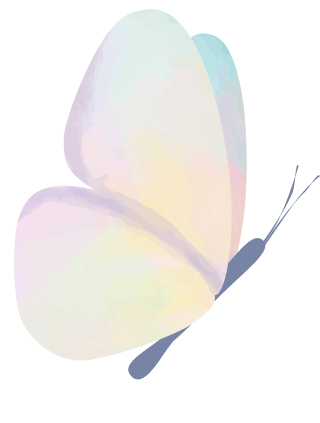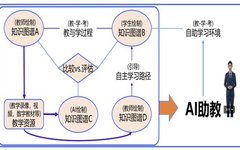With the rapid development of information technology, knowledge graphs, as an emerging knowledge management and teaching assistance tool, are playing an increasingly important role in higher education. This article aims to explore the role of knowledge graphs and how they can assist university educators in teaching design, summarizing some methods for digital course construction based on knowledge graphs and virtualization technology.
01
What is a Knowledge Graph
A knowledge graph is a technology that expresses knowledge and its interrelations in a graphical manner. It constructs complex networked knowledge structures through nodes and edges in the form of triples. In a knowledge graph, nodes represent knowledge entities, edges represent the relationships between entities, and knowledge is the collection of entities and their connotations. Knowledge graphs not only visualize knowledge systems but also enable the mining, analysis, construction, and display of knowledge resources and their interconnections through visualization technology.
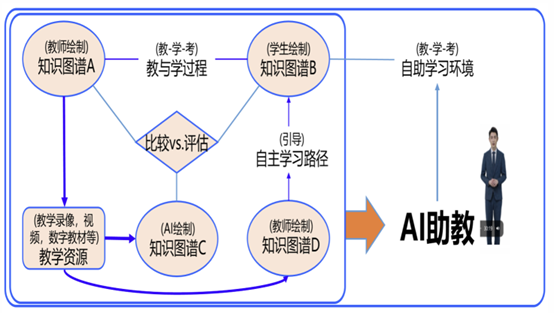
Source: “AI Empowering Teaching and Project Application Advanced Training Course – New Models and Explorations in Curriculum Construction in the New Era”
01
Basic Components of a Knowledge Graph
Nodes: Represent specific knowledge points or concepts.
Edges: Indicate the connections or relationships between knowledge points.
Knowledge: Composed of concepts and their connotations and relationships.
02
Visualization of Knowledge Graphs
Knowledge graphs present complex knowledge systems in an intuitive way using various graphical methods, such as network diagrams and tree diagrams, making it easier for users to understand and grasp.
02
The Role of Knowledge Graphs
Knowledge graphs have multiple roles in the education sector, including but not limited to the following aspects:
01Search Engine Optimization
Knowledge graphs can enhance the intelligence level of search engines, improve user search experiences through intelligent recommendations and AI-generated content (AIGC).
02Integration of Teaching Resources Knowledge graphs serve as a means to integrate teaching resources such as textbooks, literature, and case studies, organizing them in a knowledge framework for easier use by teachers and students.03Assistance in Teaching Design
Knowledge graphs help teachers clarify the knowledge framework of courses, form teaching ideas, and improve the quality of teaching design.
04Personalized Learning Paths
Knowledge graphs support the design of personalized learning paths to meet the diverse learning needs of students.
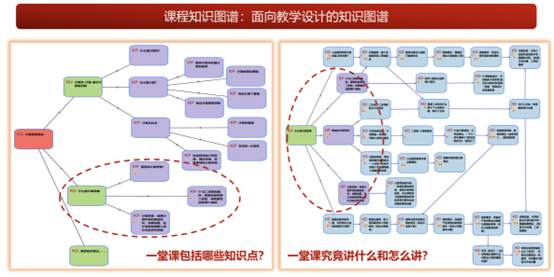
Source: “AI Empowering Teaching and Project Application Advanced Training Course – New Models and Explorations in Curriculum Construction in the New Era”
03 How Knowledge Graphs Assist Teaching Design
Knowledge graphs assist in teaching design primarily in the following aspects:
01Construction of Course Knowledge Systems
When constructing a course knowledge system, knowledge graphs, as a powerful tool, can help teachers clarify the knowledge points of the course and their logical relationships. By constructing a knowledge graph, teachers can concretize abstract knowledge points, forming a visual knowledge structure that helps students better understand the course content.
[Case Study]
For example, in a “Computer Science and Technology” course, teachers can create a knowledge graph that includes core knowledge points such as algorithms, data structures, and operating systems. In this graph, each knowledge point is a node, and the connections between nodes represent their logical relationships. For instance, data structures can be a prerequisite knowledge point for algorithms, while operating systems can support knowledge points in software engineering. This way, students can clearly see the connections between the knowledge points, allowing them to systematically master the course content.
02In-depth Exploration of Teaching Content
Knowledge graphs can not only help teachers construct course knowledge systems but also facilitate in-depth exploration of teaching content. Through knowledge graphs, teachers can present knowledge points from different angles and levels, enabling students to comprehensively understand and deeply grasp knowledge.
[Case Study]
For example, in a “History” course, teachers can use knowledge graphs to interlink historical events, figures, and cultures. For instance, connecting “The Renaissance” as a central node to nodes like “Dante” and “Da Vinci”, as well as concept nodes like “Humanism” and “Scientific Revolution”. This way, students can not only learn the basic facts of the Renaissance but also deeply understand its cultural significance and historical impact.
03Innovation in Teaching Methods
The application of knowledge graphs can also inspire innovation in teaching methods. Teachers can explore new teaching methods such as case-based teaching and problem-based learning using knowledge graphs, enhancing the interactivity and effectiveness of teaching.
[Case Study]
In an “Economics” course, teachers can create a knowledge graph that includes different economic theories, models, and real cases. Using this graph, teachers can design problem-based learning activities, allowing students to solve practical problems by exploring the nodes and connections in the knowledge graph. For example, students can explain current economic phenomena by analyzing the connections between different economic theories or predict future economic trends by comparing different economic models. This teaching method not only increases student engagement but also helps them connect theoretical knowledge with practical problems, enhancing their problem-solving abilities.
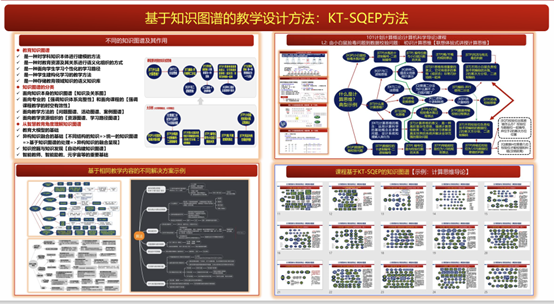
Source: “AI Empowering Teaching and Project Application Advanced Training Course – New Models and Explorations in Curriculum Construction in the New Era”
04 Digital Course Construction Methods Based on Knowledge Graphs and Virtualization Technology
With the development of virtualization technology, digital course construction has become an important direction for innovation in higher education. The methods for digital course construction based on knowledge graphs mainly include the following steps:
01Course Positioning and Value Analysis
In the course positioning and value analysis phase, teachers need to clarify the educational objectives, learning outcomes, and expected improvements in student abilities. This step is fundamental to ensuring that course content is closely aligned with student needs, academic development, and the job market.
[Example]
For example, in a “Modern Biotechnology” course, teachers first need to determine that the course aims to cultivate students’ theoretical knowledge of biotechnology and experimental skills. The course’s value lies in emphasizing the application of biotechnology in medicine, agriculture, and environmental science, as well as fostering students’ innovative thinking and problem-solving abilities.
02 Knowledge Graph Construction
Constructing a knowledge graph is the process of systematically organizing course content, and the graph can clearly display knowledge points and their interrelations, providing a structured framework for teaching.
[Example]
In a “Modern Biotechnology” course, teachers can construct a knowledge graph that includes key areas such as gene editing, cell culture, and biopharmaceuticals. Each area serves as a main node, further connecting to specific technical methods, experimental processes, ethical and legal issues, forming a comprehensive knowledge network.
03 Integration of Teaching Resources
The teaching resource integration phase requires teachers to combine knowledge graphs with various teaching resources to form a rich and diverse teaching material library.
[Example]
For the “Modern Biotechnology” course, teachers can integrate resources including online open courses (MOOCs), interactive simulation experiments, expert interview videos, and academic papers. For example, as part of the teaching unit on gene editing technology, teachers can provide simulation software for CRISPR-Cas9 technology, allowing students to perform gene editing operations in a virtual environment.
04 Implementation of Teaching Design
In the teaching design implementation phase, teachers need to develop specific teaching plans and methods based on the knowledge graph to ensure the effectiveness of teaching activities.
[Example]
In the “Modern Biotechnology” course, teachers can design knowledge graph-based teaching activities such as case studies, role-playing, and experimental operations. For instance, in the biopharmaceutical unit, teachers can arrange for students to engage in role-playing activities to discuss scientific, ethical, and legal issues in the process of new drug development.
05 Application of Virtualization Technology
The application of virtualization technology can provide students with a more vivid and interactive learning experience, enhancing the attractiveness and effectiveness of learning.
[Example]
In the “Modern Biotechnology” course, teachers can use virtual reality (VR) technology to create a virtual laboratory, allowing students to learn experimental operations such as cell culture and gene editing in an immersive environment. Through augmented reality (AR) technology, teachers can design interactive teaching materials, such as allowing students to see three-dimensional cell structures or gene sequence animations by scanning images in textbooks, thereby deepening their understanding of biotechnology concepts.
Knowledge graphs, as an emerging teaching assistance tool, provide university educators with a new teaching design concept and method. Through knowledge graphs, teachers can more effectively organize teaching content, innovate teaching methods, and enhance teaching effectiveness. Meanwhile, combined with digital technology, the application of knowledge graphs in digital course construction offers vast potential for innovation in higher education. To learn more about the drawing, usage methods, and cases of knowledge graphs, please join the Renyou Teacher Development Center’s “AI Empowering Teaching and Project Application Advanced Training Course – New Models and Explorations in Curriculum Construction in the New Era”.
Source: Renyou Teacher Development Center
Note: The above text and images are meant for sharing, with copyright belonging to the original author and source. The content reflects the author’s views and does not represent this public account’s endorsement of the views or responsibility for their authenticity. If there are any copyright issues, please contact us promptly for removal. Teacher Li: 13716398385
Recent Training Courses
-
Fifth National College Teacher Teaching Innovation Competition Precision Preparation Competition Guidance and Case Review Simulation Defense Practical Workshop
-
Implementation of Talent Training Programs and Teaching Syllabus Development Based on OBE Concept and Quality Monitoring Mechanism Construction Specialized Training Course
-
Be the Best University Teacher, Build a First-Class University Classroom – Summer Training Camp for Improving University Teacher Classroom Teaching Ability and Academic Literacy
-
Practical Operations and Innovative Presentation of Knowledge Graphs and Empowering Digital Classroom Innovation and Curriculum Ideology Construction
❤Warm Reminder❤: That’s it for today’s article~ Recently, the WeChat public account information flow has been revamped. Each user can set frequently read subscription accounts, which will be displayed in a large card format. Therefore, if you don’t want to miss articles from the “University Teacher Professional Development Alliance”, you must perform the following operations
: Enter“University Teacher Professional Development Alliance” public account → Click the upper right corner 「Menu」→ Select “Set as Starred
“
If you need past courseware/articles from the public account, please add Teacher Li’s WeChat on the right to obtain them
→

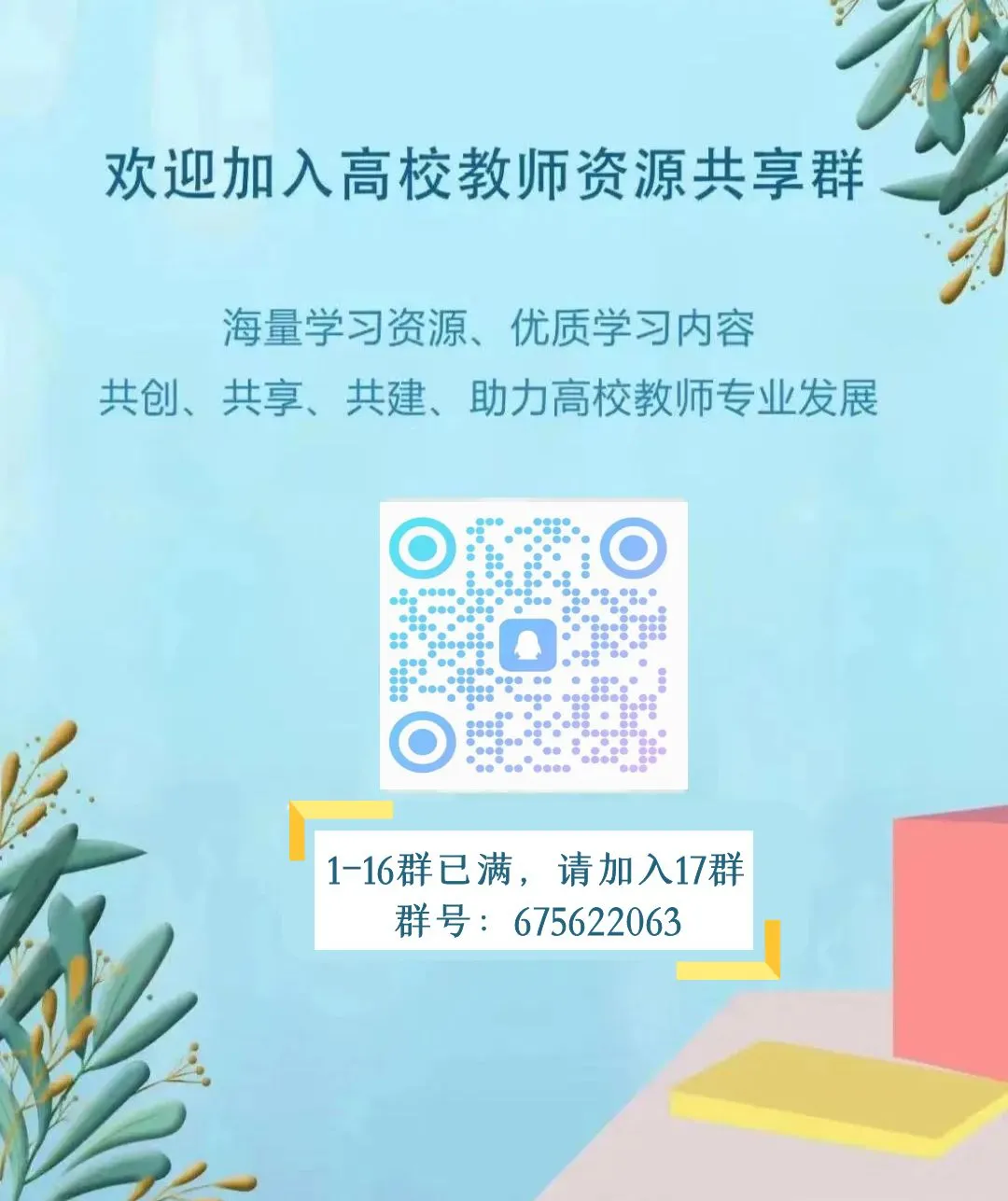
Tap the flower to let them know you“are looking at” me
